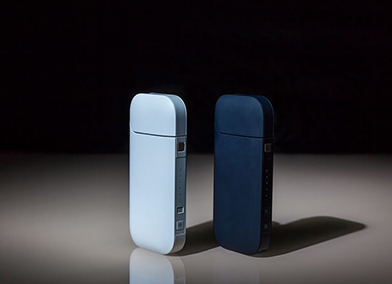The new review followed standard Cochrane methods for screening and data extraction, and the primary outcome measures were abstinence from smoking at the longest follow‐up point available, adverse events, serious adverse events, and changes in smoking prevalence or cigarette sales.
The compiled data from most studies indicated lower exposure to harmful substances linked to cancers, heart disease and respiratory problems, meaning that switching from cigarettes to HTPs may minimize the odds of developing these diseases. However, added the research team, given that the studies were all of short duration, the data is not enough to be sure.
The researchers highlighted that while they didn’t find any studies looking at whether giving smokers HTPs helped them quit smoking, two Japanese studies reported drops in cigarettes sales after IQOS entered the market.
In fact, during a recent webinar vice director of the AOI Universal Hospital in Kawasaki, Kumamaru Hiroya, said that while nicotine replacement therapies (NRTs), such as nicotine patches, have not yielded the desired results, HTPs have. Hiroya, confirmed that since heated tobacco products were launched locally, smoking rates started dropping substantially.
“In conclusion, after nicotine replacement therapy direction has been tried, they were not really a big success. However, ever since 2014, three heated tobacco products have been launched officially nationwide in Japan and these have been penetrating 25 percent [of total smoking population] and this product has been successful to reduce cigarette smoking in Japan so far by 30 percent in three to four years,” said Hiroya during a recent webinar.
Aerosol particles from HTPs
In other news, a 2019 study conducted by researchers from Kaunas University of Technology in Lithuania, analysed the levels of aerosol particles, carbonyls and nicotine concentrations in indoor air from HTPs, referred to as Tobacco Heating Systems (THS) in the study. They did this by comparing the indoor concentrations of substances such as formaldehyde, acetaldehyde, benzene, toluene, nicotine and particulate matter 2.5, from THS, with those from conventional cigarettes and other known air pollutants.
Pollution levels from THS are insignificant in comparison to cigarette smoke
The compiled data indicated that any adverse effects on indoor air quality from THS are insignificant in comparison to those from cigarettes smoke and other pollutants. “Use of THS resulted in a statistically significant increase of several analytes including nicotine, acetaldehyde, PM2.5, and PNC as compared to the background. The obtained levels were significantly lower (approximately 16, 8, 8 and 28 times for nicotine, acetaldehyde, PNC and PM2.5, respectively) compared to the levels resulting from conventional cigarette (CC) smoking under identical conditions,” read the study Abstract.
“In the controlled environment, the use of THS [as well as an electronic cigarette] resulted in the lowest concentrations of formaldehyde, benzene, toluene, PM2.5 among majority researched pollution sources [conventional cigarettes, waterpipe, incense, mosquito coils],” according to authors Violeta Kauneliene, Marija Meisutovic-Akhtarieva and Dainius Martuzevicius.
“Such data indicate that the levels of the main indoor air pollution markers in case of THS environmental aerosol may be too low to distinguish from the background, thus raising additional challenges for epidemiological studies aiming at the assessments of second-hand exposure in real-life environments,” they added.


